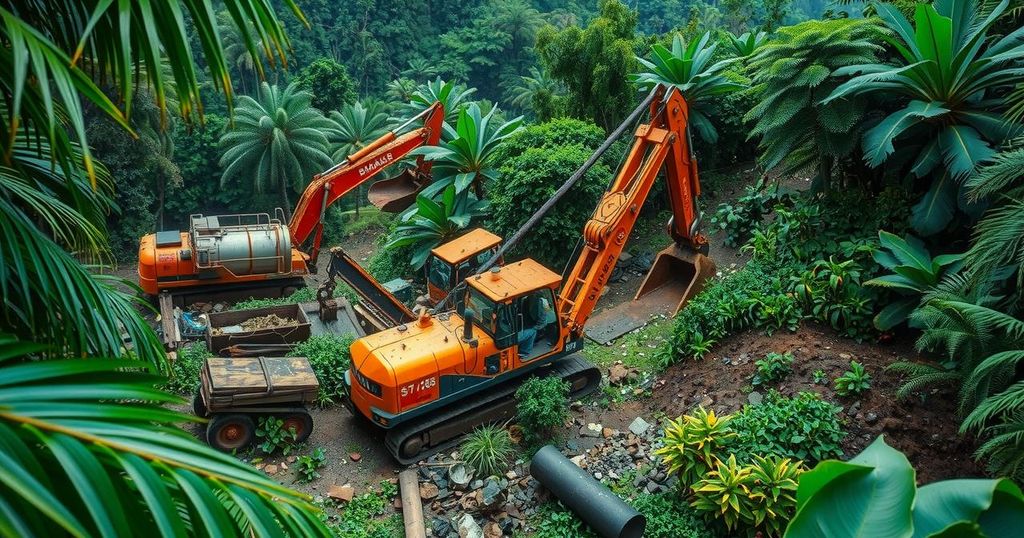Exploring Hydraulic Structures of Subduction Faults through Deep-Ocean Drilling
The IODP Expedition 405 is conducting deep-ocean drilling at the Japan Trench subduction boundary fault to investigate hydraulic properties post-Tohoku earthquake. Initial results indicate fault re-cementation could restrict fluid flow and store mechanical energy, possibly contributing to future seismic events. This research is crucial for enhancing tsunami preparedness through a better understanding of subduction zone dynamics.
In response to the devastating 2011 Tohoku-Oki earthquake, the International Ocean Discovery Program (IODP) Expedition 405 is investigating the hydraulic properties of the Japan Trench subduction boundary fault. The earthquake, which registered a magnitude of 9.0, triggered a tsunami with peak wave heights reaching 40 meters, raising questions about our understanding of subduction zone earthquake mechanics. Initial findings suggest that fault rocks affected during the earthquake may have re-cemented, potentially impeding fluid movement along the fault again. This process of fault healing may indicate that mechanical energy can accumulate, which could be released during subsequent seismic events, offering crucial insights into the role of fluids in fault dynamics and enhancing strategies for tsunami preparedness.
The Tohoku-Oki earthquake of March 2011 highlighted critical gaps in the scientific understanding of subduction zone dynamics. A magnitude of 9.0 and a resulting tsunami demonstrated the unexpected nature of fault slip and seismic activity in the region. The study of high-pressure fluids within subduction faults, including their role in lubrication and fault slip, is essential for understanding earthquake mechanics. Accessing these remote and deeply submerged faults has proven difficult, making the work of the IODP imperative in advancing knowledge of earthquake prediction and risk mitigation.
The IODP Expedition 405 represents a significant step toward unraveling the complexities of fault mechanics in subduction zones. By examining the hydraulic state of the Japan Trench several years post-Tsunami, the research sheds light on processes that may influence fault healing and future seismic activity. This work not only contributes to academic knowledge but also aids in preparedness against potential tsunami-earthquake scenarios, underscoring the importance of ongoing research in this critical area.
Original Source: www.nature.com




Post Comment